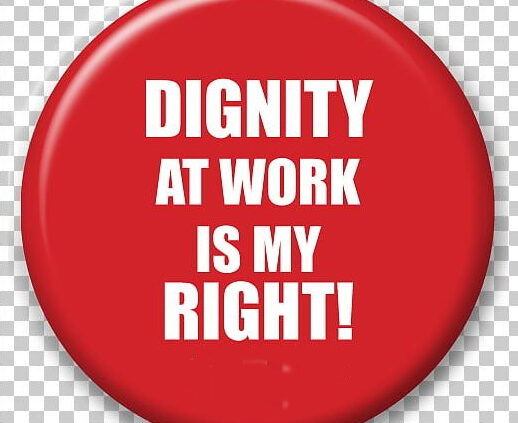The Instinct of Dignity
Initialization
The website opening page presented the site theme – we are our choices.
Making choices is an intellectual activity of an individual brain, an effort philosophers call thinking (2) responding to a “call” (1) also originating in the subconscious mind. Our target is confined to the significant sociotechnical system problems we call Category three.
“Thinking” underwrites choice making by comparing the knowledge about candidate fixes to a prioritized value system also held within the individual’s brain (3). Choices made that turn out to be good attest that high-stakes thinking took place. 1 2 3
The theme is so central to our life’s trajectory it is expressly connected to this page:
- Scope of page subject matter
- The logical couplings between theme, the sociotechnical system, and this page
Scope: This page discusses various components of dignity at work, a psychological phenomenon. It is instrumental in productivity. High productivity work groups are always displaying their dignity, their pride of workmanship. No dignity, no cooperation.
Connections: there are many ties of dignity to respect for natural laws. Being forced by the organization to attempt to defy natural law is an embarrassment to your intellection. There is no dignity in working stupid – and know it. The checklists provided amount to a self-test.
Workplace Psychological Health
No doubt about it, the psychological factors in determining social behavior, not the technical factors in the situation, always set the stage for task action selection, propelling things toward success or failure. The Second Law makes status quo, staying put, impossible. In attempting to improve social system wellbeing, psychological alignment with the requisites of goal-seeking success is paramount. For the workforce, goal-seeking performance is paramount. When healthy relationships are established, as in Plan B, social systems flourish. When social systems harbor value conflicts, entitled consumers vs producers, as in Plan A, nothing gets resolved and the organizations languish. All organizational behavior is channelled by the social environment.
Nobody is socialized or educated or encouraged to put consideration of the psychological factors of the social context ahead of taking task action. As a result, nobrainer business-as-usual social behavior, orchestrated by the subconscious mind, has established a miserable record of inciting warfare and other sorts of significant social system failures. Via your endocrine system, the loss of dignity that ensues, angst, cascades a slew of consequences to your physical health.
Avoidance of the psychological factors of social behavior does not change their paramount role in selecting effective task actions. It just makes the selection process in use highly prone to making grievous errors that stream catastrophes on to the world stage every day. If you really want to fix a mal-performing organization, you really have to replace its psychological undercarriage with one that works. All else is accepting unnecessary failure, such as the ongoing recession, to placate the infallible ruling class.
We engage in silence breaking about the many psychological factors of the workplace because there is no other way but open discussion of significant constraints and impasses to attain organizational success. Technical expertise is no match against a hostile working environment. Fully socialized and then brainwashed by academia, we wasted four decades trying to prove otherwise.
Herein the many interconnected psychological factors are rolled-up and packaged as the instinct of dignity. It is an ensemble of psychological mindsets. Everyone knows when they have dignity at work and when they don’t. Individual assessment of his dignity is always correct for the individual. The state of dignity of others is readily recognized as such by the subconscious mind, in a centisecond. You can say you have workplace dignity when you don’t, but no one’s subconscious is being fooled. Just like facial recognition, your subconscious mind can detect the absence of dignity on sight. The worker, going ca’canny, reciprocity against abuse from management, gains satisfaction from reciprocal action but his self image as a producer attenuates his dignity in the process. Something does not feel right about holding back.
The more we learn about the psychological engine of social behavior, the more we appreciate its complexity and resiliency. Incessantly changing as technical conditions change, social behavior has uncountable entwined causes and cascading effects that never seem to reach closure. The fact contemporary Establishments choose to ignore these human factors critical to success, fully accounts for the sorry state of national affairs around the globe. It’s all the same defect in applied social intelligence.
We have been licensed professional engineers for decades and have yet to encounter an engineer, manager, or scientist, including sociologists and psychologists, eager to learn the fundamental mechanisms of action that drives dysfunctional social behavior. Our personal advantage is that we have the answer book, published on this website, and can demonstrate its validity on any organization, including yours. Since 2013, we have claimed the competency exists to take any languishing Plan A organization and transpose it, as-is, into a flourishing enterprise. You can visit implementations and evaluate the extraordinary claim for yourself.
With the experience of implementing Plan Bs, and practicing the appropriate psychology with the keystones, there is proof positive for us that sociotechnology works. And that means everything to the future trajectory of humanity. Yes, it’s a very large, profound concept to get your mind around and its implications for living boggle the mind.
There are two forms of dignity. Inherent dignity comes from being human, possessing the Homo sapiens genome and the instincts that come with it. Instinct is defined as the natural tendency that a person has to behave or react in a particular way. The tendency does not involve cognitive effort.
Earned dignity comes from taking appropriate action – resisting infringements on your dignity and exercising your instinct of workmanship. All flourishing social systems, top to bottom, have earned dignity. They can’t flourish any other way. There are no losing echelons of the organization in Plan B.
Malfunctioning organizations can have no dignity, top to bottom. What’s there to be proud of?
General facts and remarks about dignity at work
- No organization can flourish without the eager, voluntary, and creative participation of the workforce – in dignity mode.
- Despotism prevailed after slavery was abolished. In a bumpless transfer, the overseer’s book of penalties replaced the slave driver’s lash.
- Nothing rivals the power and influence of organizational ideologies set by management for workplace dignity.
- Dignity needs constant defense from class-inspired management attacks.
- Organizational dysfunction represents a failure of management to live up to expectations of rational behavior.
- Resistance to dysfunctional management is an automatic universal. Everyone has experienced the emotion. The workplace people can make any management initiative succeed or fail. Reciprocity, fast, comes before compromise, slow.
- The aspects of work that concern workers are more affected by changes in the social organization of work than by technical changes.
- Employee involvement is a factor in dignity, but in Plan B it never arises as an issue. The employee is already involved shaping his own work scene. When taken as a separate matter, employee involvement gains are eroded by the Nash Equilibrium.
- Human agency is best understood as a process. Voluntary and creative, agency determines the directions of social movements and progress in the pursuit of dignity at work. We place agency with the instinct of workmanship.
- Workers set their goals, even as many collaborate in their own exploitation.
- Social support is a basic need for worker dignity.
- Management only has the stick. With no carrot for dignity, workers are ever suspicious of management initiatives. Management abuse triggers reciprocal workplace resistance. Management abuse, such as when workers are being treated as objects to be manipulated, is offset in part by the instinct of workmanship.
- Realization of self-actualization in productive experience is part of building dignity.
- The withdrawal of cooperation occurs instantly as a subconscious mind phenomenon. Workforce resistance is an effort to reestablish justice and equity for dignity.
- The instinct of workmanship, self-directed completion of worthwhile tasks, is a fundamental human characteristic, invariant human nature. Workers have high standards for what constitutes respectable and on-target performance. It is connected to invention, innovation, and adaptation at the workplace.
- In organizational dysfunction, agency is routinely slighted. A rich informal culture exists and it strongly influences productivity.
- When work denies dignity, it is considered a betrayal of inalienable rights and worker enthusiasm reverses polarity, inviting corruption and sabotage.
- Neither strikes nor machine sabotage are as common as social sabotage.
- Bureaucracy erodes dignity through extreme rationalization and over regimentation – sworn enemies of the instinct of workmanship. Bureaucratic settings exhibit the least solidarity and encourage anonymity, impersonality, and distance. Even when management is inept and inhumane, instincts exert their influence.
- Obstacles to dignity attainment include incompetent, abusive management, incursions on autonomy, and contradictions in employee involvement. Robbing employees of their desire to take independent initiative in support of productivity, direct personal supervision is a breeding ground for mismanagement and abuse. Direct critical supervision often leads to despotic relations and abuse, where reciprocity creates resistance. Close supervision is only beneficial in the early stages of a master/apprentice relationship.
- Maldistributed authority leads to mismanagement and abuse, inhumane treatment, and assures the demise of the organization. Employees cannot take pride in their work when the rulers have made it impossible to work effectively, squandering opportunities to tap the huge reservoir of workforce talent and voluntary positive actions. The efficiency of the production process and product quality are not the paramount goals and values of management. Neither is profit nor competitive advantage. Since management values are established by what they do, not what they say, assume that erasing workforce dignity is high on the list.
- While working with dignity is requisite to realize one’s full humanity, it requires vigilant maintenance, punctuated by frequent skirmishes. The instinct of workmanship, agency, must not be infringed.
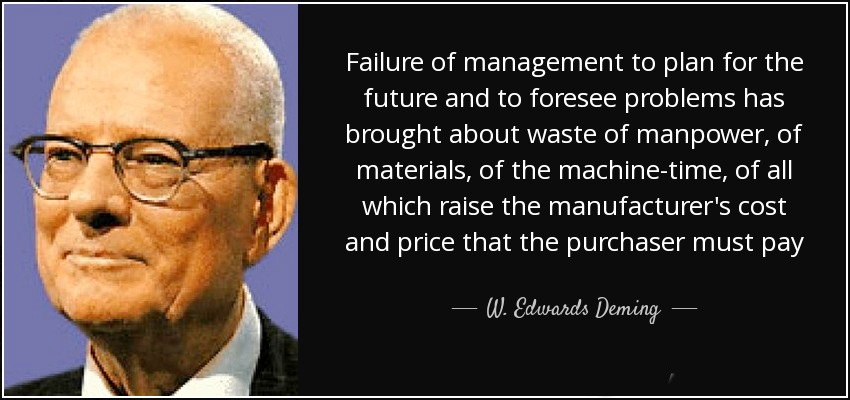
General remarks on the instinct of workmanship
- Pride in work and committed to authentic organizational goals – the instinct of workmanship.
- Resistance and repression of the workmanship instinct play major roles in possibilities for productivity improvement. Management incompetence and abuse generates resistance and undermines the instinct of workmanship, failing their implied obligations to organizational success. Abuse always degrades worker social status. Management sets the standards as belligerence and chaos and employees are unable to redefine the situation.
- The instinct of workmanship assumes the right and responsibility to make final choices about the methods and techniques to be used for a specific task. It determines the sequencing, scheduling, and prioritizing of work activities. It determines when a task is satisfactorily completed. It supports self-efficacy, job satisfaction, and meaning in work.
- The instinct of workmanship shows persistence in the face of adversity. It fosters social status by performance. It associates with autonomy.
- Autonomy in relation to tools, techniques, and work priorities is of utmost importance.
- Autonomy for quality, pride, It is locked with outcome responsibility.
- Craft workers are about 10% of the workforce. Professions are about 20%, characterized by formal knowledge, autonomy, say over clients and subordinate groups. Characterized by placing client interests above their own as necessary, the relationship to dignity is clear. Forget bureaucratic rules, supervisory fiat, and authority of office. Various forms of control are deeply intertwined.
- Since supervisory fiat subverts autonomy and stifles creativity, craft workers redefine the workplace on their own terms and resist subordination to management demands and agendas. Otherwise, workers find themselves supporting a despotic regime that subverts their dignity as a matter of unearned privilege and habit.
Aspects of personal dignity
There are several ways to establish dignity. All involve your cognitive apparatus and intelligent effort. It can be achieved through camaraderie, building trust and solidarity with coworkers. Working toward earned dignity requires purposive, considered, and creative effort even as dysfunctional workplaces deny dignity and infringe on well-being. Many quotes about dignity in the literature attest to its significance:
- The daily struggle for dignity at work occupies a central place in workforce lives.
- Life demands dignity and work is a primary source.
- Dignity is necessary for a fully realized life.
- Dignity is a powerful force in every aspect of social life.
- Dignity attainment is proof of control over your work life.
- Earning dignity is essential for building a life well-lived.
- Without dignity at work, life is unbearable.
Dignity destroyers
- Mismanagement and abuse
- Having to obey wrong task action choices
- Depersonalization
- Overwork
- Limits on autonomy, workmanship
- Contradictions of employee involvement
- Unfairness and discrimination
- Social conditioning
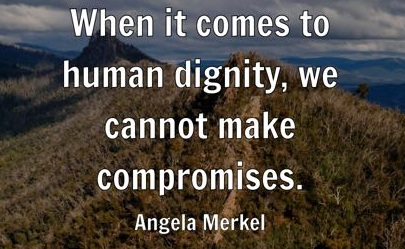
The role of management in worker self-respect
Over the last two centuries, much has been written about the management and worker relationship. Some quotes:
- Management is the deliberate barrier to working with dignity. It undermines worker wellbeing and fulfillment of the instinct of workmanship.
- Unilateral systems of management and tight control produce the greatest resistance from the workplace, a sociological universal.
- There is no shared moral code guiding the actions of the different managerial occupations in society. This fosters harsh physical and emotional abuse of workers. In the zero-sum competition over social status by authority (opinion), the value system of management is set against the value system of productivity.
- The mal-treatment they receive at the hands of management determines reciprocal treatment of management as determined by the subconscious mind instantly.
- Hegemony connotes overwhelming power to limit options and control ideology.
- Management fails to specify and observe humane normative structures supporting the social and technical relations of productivity. Management, treating the workforce as replaceable objects, rarely lives up to the stated norms of proficiency and worker/stakeholder concern.
- Malmanagement, a demoralizing experience, is reciprocally coupled to Ca’canny. The worse it gets the more resistance forms, there is no lag in this sort of reciprocity. It is a barrier to quality work. Trust reverses polarity.
- Management by stress, threats, and abuse is as counterproductive as it is ubiquitous.
- To the extent management abuses the workforce at the cost of reduced security, dignity, and well-being, workforce reciprocity will be negative, dropping productivity by 25% or more.
- Unlike the workforce, management does not identify with the fate of the enterprise. It throws the company under the bus, collects the rewards for the crime, and goes on to the next target to repeat the trademark script of the venture capitalists. Before the payoff, management lives in fear of being found out as inefficient and inept, the imposter syndrome.
- Management, like politics, is not a profession. It has no norms of citizenship, conditions of licensure, and no responsibilities to serve society in a humane fashion. With legal impunity, it does not concern itself with what’s best for the organization. It reports to no one.
- Management pretends that the system it actualizes is the one it wants. Poor performance is rationalized away and paid for under overhead.
- Hegemonic control of the workplace by the ruling class, its paramount value.
Roles of the organization
- The social organization of the workplace is the dominant force in determining the meaning of work and the success of the enterprise.
- Organizations are cooperative systems that serve to integrate the contributions of their membership, either towards the zero-sum game over authority, or towards society-beneficial performance.
- The workplace serves many other functions in addition to economic production. It stages many psychological functions that impinge on productivity. There are various pursuits of independent meanings in social climate separate from chronic management malfunction. Emergent group values and norms, presenting a united front, are a factor.
- Social structures have predictable consequences. They define, limit, and guide human activity. Plan B does not depend on changing them.
Building Dignity at work
- Dignity is earned through effective actions. It takes active agents exercising control over their work life.
- Resisting infringers on dignity, such as defending inalienable rights and by creative and purposive activity. Countless small acts of resistance against incompetence and abuse.
- Performing beyond institutional expectations.
- Applying your instinct of workmanship (citizenship), agency-warranting autonomy
- Establishing independent dignity-meaning systems, apart from the chain of command
- Development of social relations at work, camaraderie and solidarity
- Job satisfaction, meaning in work, well-being, and productivity earn dignity at work.
- Resistance to incompetency and abuse: passive and active. Reciprocate by withholding performance and sabotaging production.
- Workmanship, an instinct of Homo Sapiens
- Self-satisfaction
- Independent meaning systems
- Reliance on social networks.
- Dignity at work is earned through performance, creative activity, workmanship, self-respect, and identity. Coworker relations are the measure.
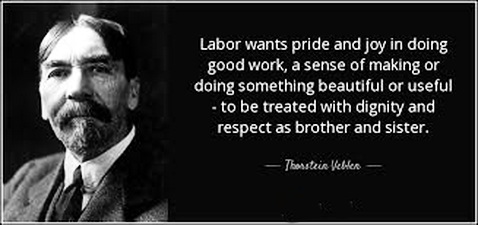
Role of the keystone in dignity at work
As the only viable entryway into organizational culture, the keystone, always a man in the middle, is the focal point of attention in the Front Line Leader Program (FLLP) run by interventionists. Keystones are the only ones who have the ability to create either a workplace culture of respect and dignity or a culture of disrespect and disorganization. Regarding social status, keystones have nothing to lose. They are not players in management’s value system.
Be mindful that bureaucracies, academics, and managers deliberately fail to recognize the significant autonomous and creative dimensions of the workforce. Science only looks at workplace productivity through the lense of top-down authoritative control by the ruling class where trust is assumed to be non-existent and worker inputs of creativity and workmanship are non-starters and theoretically inconsequential.
Workers earning dignity at work comprise a huge untapped reservoir for bringing prosperity to the organization. Unrealized human potential is, by far, the greatest asset for building a flourishing organization. It is the drive wheel of productivity and competitive advantage.
After he has been enlightened to his role by the interventionist, the keystone begins to concern himself with bringing dignity at work to his squad of workers, win-win. He has learned that:
- The rationalization of work life is a complex phenomenon.
- Overwork is exploitation, the centerpiece of ruling class values.
- “Smooth operators” know how to manipulate social situations to their advantage.
- Worker autonomy is connected to worker participation in productivity improvement.
- As organizations grow in size, alternative status hierarchies appear.
- Keystones are the only ones who have the ability to create either a workplace culture of respect and dignity or a culture of disrespect and disorganization.
- The work group can be highly effective in securing high levels of effort, especially when it takes responsibility for delivering gains in productivity. Teams have a long history in the workplace.
- Coworker support is essential for the defense of dignity and solidarity. Solidarity amplifies productivity of the workplace, positive or negative.
- Friendships for protection, shared meanings, and norms of workmanship require keystone leadership.
- The personal nature of the work process cannot be eliminated. Personalization of the workers is essential. Respect for inalienable rights encourages positive relations among coworkers. The workplace is interactionally intense.
- Dignity includes the right to participate in all aspects of the work environment, the opportunity to exercise agency. It includes the realization of specific goals that define the lived experience of work.
- The opportunity to exercise creativity at work is crucial for working with dignity.
- Dignity is an all or nothing proposition. Since the factors that comprise dignity come as an entangled set. Like trust, the absence of one signals loss of them all.
- Keystones earn the trust of their reports by proactively respecting their rights to attain self-realization and dignity at work.
- Realization of self-actualization in productive experience is part of building dignity.
Remarks from the interventionists
- The Plan B interventionist role cannot be divided to fit available discipline talent. Team teaching doesn’t work, as proven by academia in teaching systems engineering. It must be combined in one person.
- Lessons from the hierarchical organization are both poignant and inspiring. Only knowledge-based strategies to change things have a chance. Business as usual does not.
- Workforce culture cannot be changed directly. The keystone has to be enlightened by the interventionist to understand his inherent power and autonomy, realized through his role in the workplace ecosystem. The front line leader represents the sum total of organizational goals, policy and management competency to the workforce. He is functions in the workplace in close proximity to his reports.
- With the answer book in hand, it is easy to see where the conventional efforts to fix management incompetence and abuse of workforce dignity never had a chance. Warfield’s dictum
- The constructs held by society about the world of work are incongruent with the operational reality. Since both are scrutably connected to human nature, any strategy which requires a change in culture is fodder for the Nash equilibrium and a pursuit of the impossible. It is a contest of wills within the same human genome.
- Subtle conflicts between management and workers are equivalent to running skirmishes and pitched battles. The attitude is the same and its door swings both ways. Group solidarity follows the establishment of positive reciprocity. Like trust, solidarity can vanish in an instant.
- Failing to understand the operational value system of the ruling class and how it contrasts with the operational value system of the workforce is a capital error. There is little common ground upon which to negotiate. The value system of management, as exhibited in practice, is diametrically opposed to the value system held by workmen. To satisfy management “needs” is to alienate the workforce from its dignity.
- Workforce personalization by keystones is paramount. When management treats its workers as numbers, erasing individuality, to form objects worthy of abuse, all thoughts of attaining dignity should be abandoned.
- Any strategy for a fix to organizational dysfunction must exclude any dependency upon management interaction. Management culture cannot be changed. There is nothing constructive to work with. Management is too remote from front line reality dynamics to make meaningful contributions to productivity (2½ rule).
- The recipe in the answer book is a sociotechnical system, Plan B, that requires many painstaking steps in an exact sequence. Errors in orchestrating the system transposition as prescribed prevent goal attainment. Arranging for the wide range of knowledge, skills, and experience required to succeed is a monster challenge. The record makes it clear that the body of existing management knowledge is outclassed by the variety in the management challenge (Ashby’s Law). Sociotechnology is a foreign language to the head shed.
- The class struggle is over very different value systems across various social groups. Most of the conflict is staged in a contrived, illegitimate zero-sum arena. That is, the size of the “pie” being contested is not fixed.
- Dysfunctional organizations and abusive management establish coworker conflicts that override any initiatives for increasing solidarity and mutual defense.
- When it comes to defending dignity, women and men live in parallel universes.
- Dysfunctional organizations and abusive management establish coworker conflicts that override any initiatives for increasing solidarity and mutual defense.
- Engineering is classified as a bureaucratic profession making the least use of worker’s skills. There is no single indicator of bureaucracy.
- Work life is intimately connected with family life. When the organization heads South, the community suffers accordingly.
- The military form of operations, hierarchical, is aligned with contemporary organizational culture in general. It can be just as corrupt and counterproductive as industrial forms.
- Professions control the knowledge base defining their area, defending against incursions by other disciplines. Workers see professionals as managers who have their own agenda, independent culture, and identity.
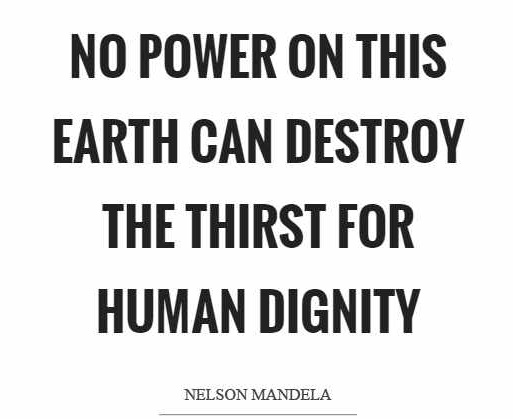
Views: 113


